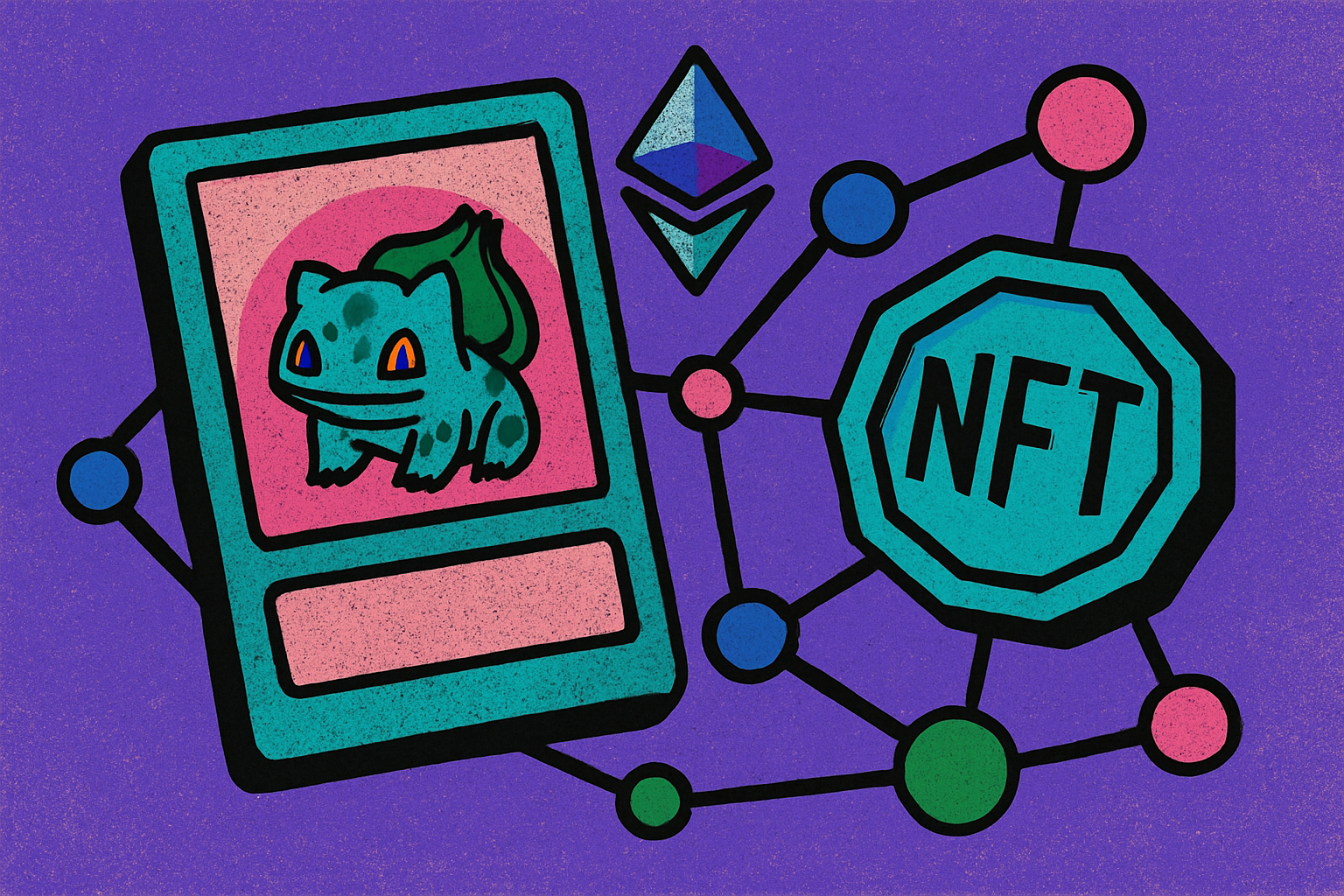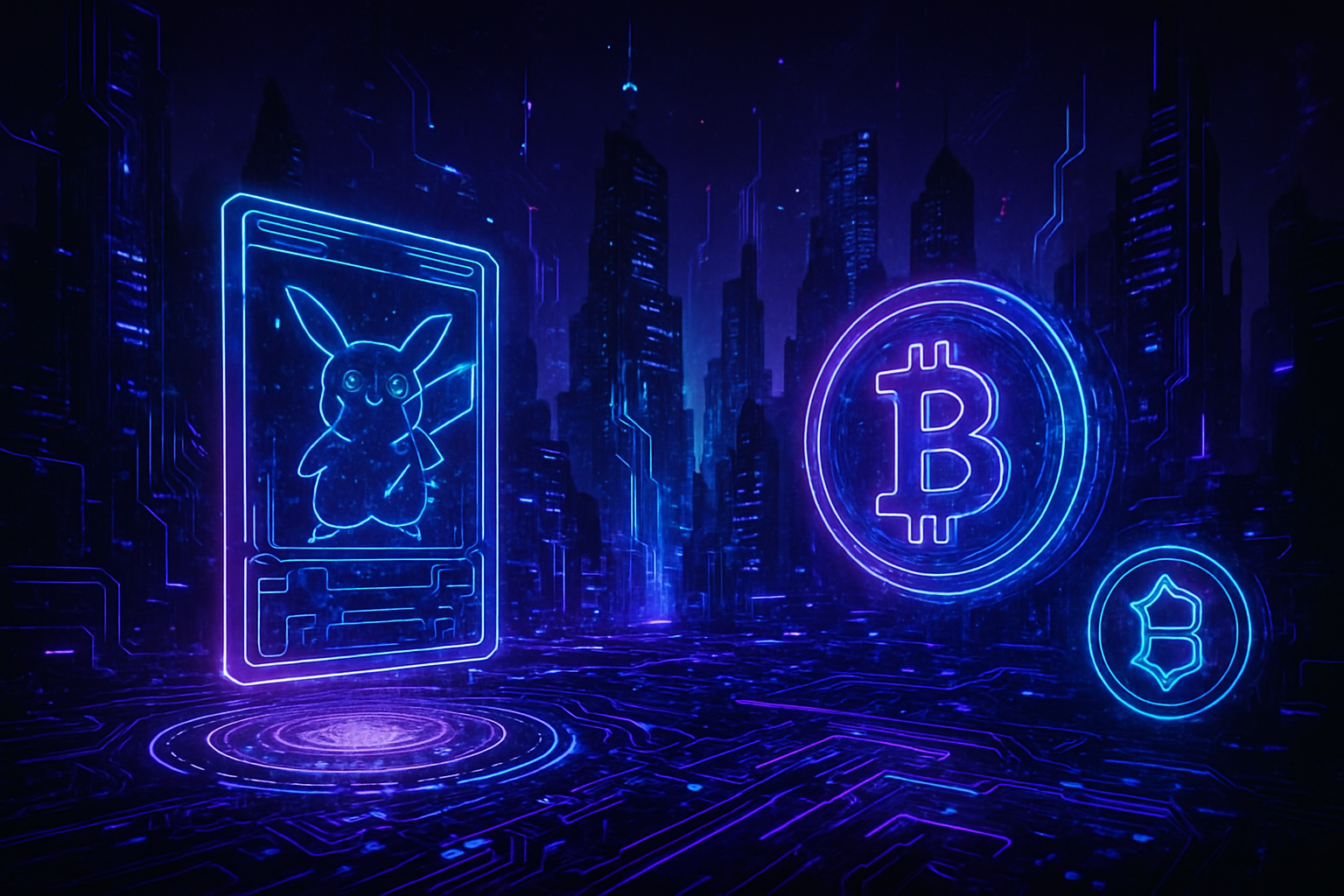
Tokenizing Pokémon cards as NFTs is fundamentally reshaping the landscape for collectors, investors, and crypto enthusiasts. With the Pokémon trading card market reaching new highs and tokenized assets surging to $124.5 million in value (per Medium · Miguel Morales), the intersection of physical collectibles and blockchain technology is no longer theoretical, it’s actionable, accessible, and increasingly mainstream.

Why Tokenize Pokémon Cards? The Data-Driven Case
The rationale for tokenizing Pokémon cards is grounded in both security and liquidity. Traditional collecting requires physical storage, trusted grading, and often cumbersome peer-to-peer transactions. By contrast, Pokémon card NFTs offer:
- Proof of Authenticity: NFTs act as immutable certificates of ownership on the blockchain.
- Global Liquidity: Instantly list or trade your cards with collectors worldwide, no shipping required until final settlement.
- Fractional Ownership: Some platforms enable users to purchase fractions of high-value cards, democratizing access to rare assets.
- Programmable Royalties: Creators can receive royalties on secondary market trades.
This data-driven approach is fueling a new wave of interest. Projects like Collector Crypt have seen their $CARDS token surge as NFT-backed Pokémon cards become hot commodities (Bitget, MEXC).
The Tokenization Process: Step-by-Step Overview
If you’re ready to turn your physical collection into digital assets, here’s a concise breakdown based on recent industry best practices and current platform standards. For a more granular walkthrough, check out our detailed step-by-step guide.
- Digitize Your Cards: Use high-resolution scans or photos that clearly show both sides of each card. Proper imaging is critical for authenticity checks.
- Select a Blockchain Platform: Ethereum remains dominant, but alternatives like Polygon and Solana offer lower fees. Choose based on your priorities, network effect or cost efficiency.
- Create a Digital Wallet: MetaMask (for Ethereum) or Binance Chain Wallet (for Binance Smart Chain) are top choices. This wallet will store your NFT once minted.
- Purchase Cryptocurrency: Acquire enough ETH, BNB, or SOL to cover minting costs. Transaction fees can fluctuate; check current rates before proceeding.
- Select an NFT Marketplace: OpenSea, Rarible, and Mintable are leading options. Ensure your chosen marketplace supports your blockchain of choice and allows for detailed metadata entry.
The Critical Link: Connecting Your NFT to the Physical Card
The true value proposition comes from linking the digital token to the real-world asset. Top platforms now require a unique identifier (QR code, NFC tag) attached to each card, which is then referenced in the NFT’s metadata. This ensures that when you buy a Pokémon card NFT, you’re not just acquiring pixels, you’re gaining verifiable ownership of a tangible collectible securely stored in a vault or by a trusted custodian (see CoinGecko’s platform analysis). Some leading projects even provide on-chain certificates of authenticity embedded within each NFT.
This hybrid model, NFT plus physical custody, is what’s driving renewed confidence and price discovery in trading card crypto markets. As always, ensure you understand both the technical steps and legal implications before minting or trading. For further reading on how these processes work across different blockchains and marketplaces, see our comprehensive resource at How to Tokenize Pokémon Cards as NFTs: A Step-by-Step Guide for Collectors.
As the Pokémon card NFT space matures, collectors are not just tokenizing for novelty, they’re seeking enhanced liquidity, transparency, and global access. The presence of secure vaulting services and immutable on-chain metadata means that buyers and sellers can transact with unprecedented confidence. This is especially crucial as the market for tokenized Pokémon cards continues to expand, with total value locked in these digital assets reaching $124.5 million according to recent data from Medium · Miguel Morales.
Beyond Minting: Trading, Lending, and Fractionalization
Once your Pokémon card is tokenized, a world of opportunity opens up. Leading platforms like Collector Crypt and tcgonchain. com are pioneering models where NFTs can be traded instantly, used as collateral for crypto loans, or even fractionalized, allowing multiple collectors to own a share of a single high-value card. This evolution is making Pokémon card NFTs more than collectibles; they’re becoming dynamic financial instruments within the broader real-world asset NFT ecosystem.
- Trading: NFT marketplaces enable 24/7 global trading without the friction of physical shipping. Settlement is rapid and transparent.
- Lending: Some platforms now allow you to use your Pokémon card NFTs as collateral. While practical limits remain (as noted by Yahoo Finance), this trend is gaining traction.
- Fractionalization: By breaking ownership into shares, rare cards become accessible to a wider audience, further boosting liquidity and price discovery.
The ecosystem is evolving quickly. For those seeking a deeper dive into advanced strategies, like leveraging NFTs for DeFi or participating in community governance, visit our extended guide: How to Tokenize Your Pokémon Cards as NFTs: Step-by-Step Guide for Collectors.
Key Considerations Before You Tokenize
Due diligence is paramount. The security of your physical card, the reputation of your chosen platform, and the clarity of legal ownership transfer should all be verified before minting. The best-in-class platforms provide transparent custody solutions and robust dispute resolution processes. Always review marketplace policies regarding physical redemption and ensure your NFT’s metadata contains accurate, verifiable details.
The Future of Trading Card Crypto: What’s Next?
The convergence of blockchain and collectibles is still in its early innings. As regulatory clarity improves and infrastructure matures, expect new features like automated royalty payments, cross-chain interoperability, and enhanced provenance tracking. With $124.5 million already circulating in tokenized Pokémon cards alone, mainstream adoption is accelerating, and platforms like tcgonchain. com are helping set the standard for security and transparency in this space.
If you’re ready to bridge your collection into the digital era, or simply want to stay ahead of the curve, the time to explore Pokémon card NFTs is now. The tools are robust, the market is liquid, and the upside potential for both collectors and investors has never been greater.













